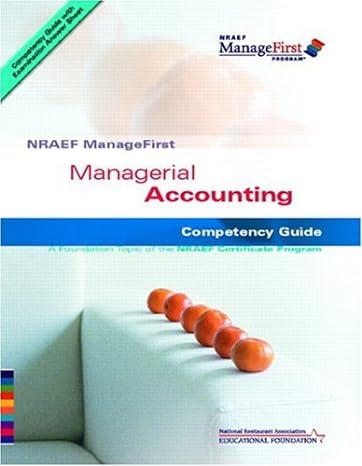Question
The Oasis Ceramic Company: The Oasis Ceramic Company based in Baroda, Gujrat was one of the many ceramic manufacturers making Ceramic tableware for the daily
The Oasis Ceramic Company: The Oasis Ceramic Company based in Baroda, Gujrat was one of the many ceramic manufacturers making Ceramic tableware for the daily table use of the Indian people. Mr. Cupwala - the personality: In 1988, a young Mr. Cupwala took over his family business. He saw an opportunity to cater to the market of the Indians, i.e. the growing middle class who had begun to buy Ceramic tableware as daily crockery. However, he realized that the traditional methods were inadequate. He was an innovator and introduced advanced methods of casting and injection moulding using machines. Five years later, when the booming Indian industry caught pace, Cupwala established multiple manufacturing units, and produced 150,000 pieces of Ceramics tableware each year for the Indian mass consumer market. The profit from operations was $25,000. The Brand: Cupwala named his brand Kohinoor after the famous Indian diamond. The brand became India's best known and best-selling brand, being synonymous with good quality, high class and luxury. The Market: The market for Ceramic ware in India seemed to have matured, with the production steady at 700,000 pieces a year. However, in 2010s, Oasis received two American offers The American offers: The Ceramico offer: The first offer was from Mr. Phil Rose, V.P Marketing at Ceramico. They were the largest manufacturer of high quality dinnerware in the U.S., with their Crown Jewel brand accounting for almost 30% of total sales. They were willing to give a firm order for three years for annual purchases of 400,000 sets of Ceramic tableware, delivered in India and at 5% more than what the Indian people paid. However, OCC would have to forego the Kohinoor trademark to Crown Jewel and also undertake not-to-sell Ceramic tableware to anyone else in the U.S. The offer promised returns of $720,000 over three years (with net returns of $83,000), but with little potential for the U.S. market on the Kohinoor brand beyond that period. The Bourbon and Mark offer: The second offer was from Mr. Walter Bourbon of Bourbon and Mark (B&M), Chicago, the largest supplier of hotel and restaurant supplies in the U.S. They perceived a U.S. market of 600,000 sets a year, expecting it to go up to 2 million in around 5 years. Since the government did not allow overseas investment, B&M was willing to budget $1.5 million for the next two years towards introduction and promotion. Oasis would sell his Kohinoor brand but would have to give exclusive representation to B&M for five years at standard commission rates and also forego his profit margin toward paying back of the $ 1.5 million. Meeting the order: To meet the numbers requirement of the orders, Oasis would either have to expand capacity or cut down on the domestic market. If he chose to expand capacity, the danger was of idle capacity in case the U.S. market did not respond. If he cut down on the domestic market, the danger was of losing out on a well-established market. Oasis could also source part of the supply from other vendors. However, this option would not find favour with either of the American buyers since they had approached only Mr. Cupwala, realizing that he was the best person to meet the order. Decision problem: Whether to accept any of the two offers and if yes, which one of the two and under what terms of conditions? Oasis Objectives Short Term: To expand into the U.S. market. To establish their brand in the US market as well. Long term: To increase profit volumes by tapping the U.S. market and as a result, increasing scale of operations. To increase its share in the U.S. Ceramic tableware market. Major Criteria: Profit Maximization criterion: The most important criterion in the long run is profit maximization. Risk criterion: Since the demand in the U.S. market is not as much as in India. Brand identity criterion: Oasis has painstakingly built up a brand name in India. It is desirable for them to compete in the U.S. market under the same brand name Flexibility criterion: The chosen option should offer Oasis flexibility in manoeuvring the terms and conditions to their advantage. Additionally, Oasis should have bargaining power at the time of renewal of the contract. Short term returns: Oasis should receive some returns on the investment he makes on the new offers. However, this criterion may be compromised in favour of profit maximization in the long run.
Answer the following questions for the case:
1. What are the options that Oasis have, keeping in mind the short and long term goals? What can they do in such a situation?
2. Analyse the viability of the options based on the criteria provided. Provide recommendations for the most suitable option.
3. If you were to accept the offer from any of the mentioned firms, how would you negotiate the terms to become more favourable to Oasis.
Step by Step Solution
There are 3 Steps involved in it
Step: 1

Get Instant Access to Expert-Tailored Solutions
See step-by-step solutions with expert insights and AI powered tools for academic success
Step: 2

Step: 3

Ace Your Homework with AI
Get the answers you need in no time with our AI-driven, step-by-step assistance
Get Started


